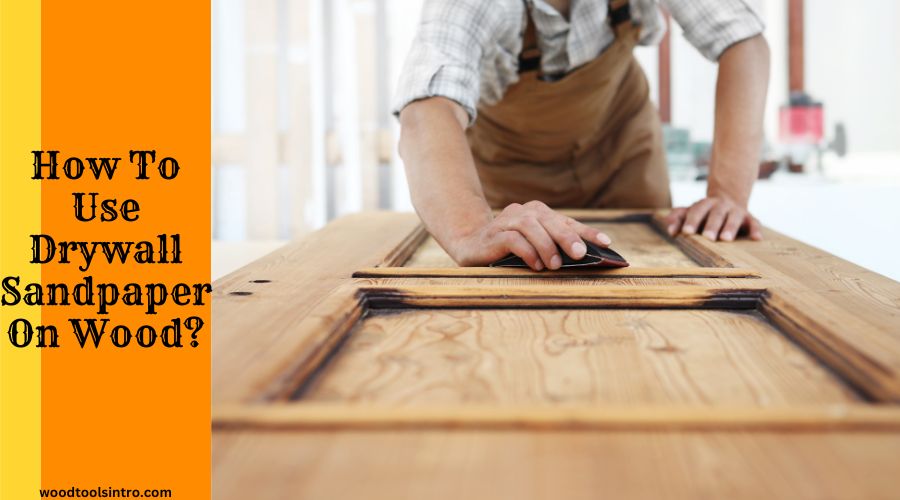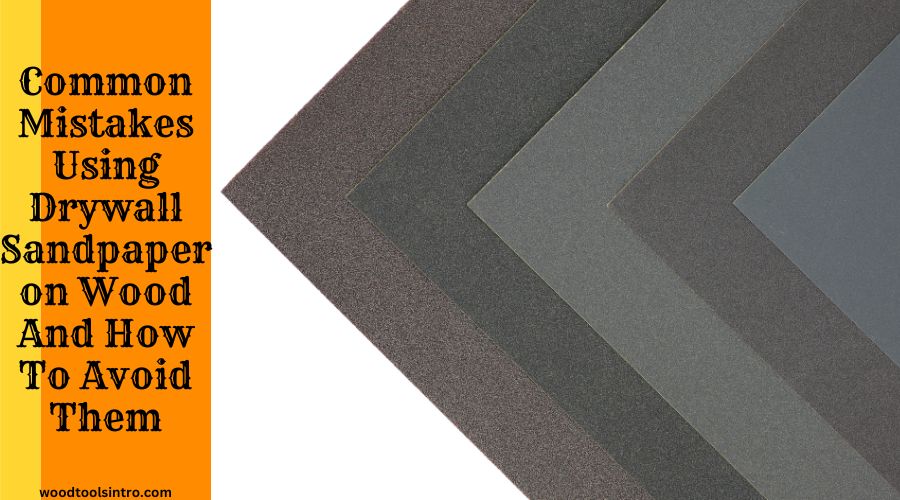Sandpapers are of so many types made to complete their desired sanding applications. But when it comes to drywall sandpaper, I’ve seen many people using it on wood to smoothen the surface.
But can you use drywall sandpaper on wood? Well, this is what I’ll talk about today right here in this post.
Is There A Difference Between Drywall Sandpaper And Regular Wood Sandpaper?
As the name suggests, drywall sandpaper is mainly used for sanding drywall, while regular sandpaper is suitable for regular sanding projects.
That said, I’ve got almost the same result using drywall sandpaper over the regular one to complete my usual sanding projects.
This is because they offer nearly the same result if you use them the way they require.
Related Article
Can You Use Drywall Sandpaper On Wood?
Even though the manufacturer has made drywall sandpaper especially for sanding drywall, you can still use it on wood to achieve the best outcomes.
Not only for wood, but drywall sandpaper can also sand off other such materials to eliminate paint, rust, and stuff like that.
How To Use Drywall Sandpaper On Wood?

To sand wood through drywall sandpaper, you can’t apply any random procedure, grits, and other tools. For this, you must go through the following steps mentioned below:
Things Required:
- Fine grit drywall sandpaper (180 & 220)
- Medium grit drywall sandpaper (100 & 150)
- Coarse grit drywall sandpaper (80)
- A piece of the sanding block
Step-1: Choosing Multiple Sandpaper Grits
When you get into sanding drywall, you should stick with the 100 or 120-grit only. But as you’re going to sand wood, collecting numerous grits is mandatory to ensure a smoother surface is mandatory.
Indeed, you’ll find three grit types in general, including coarse, OK, and medium. Each serves different characteristics with different benefits and drawbacks.
As for the coarser, 80-grit drywall sandpaper is fine to pick up. For the medium one, rely on 100 and 150 grits. And lastly, choose 220 and 180 grit for the finer-grade drywall sandpaper.
Step-2: Collect a Sanding Block
Undoubtedly, a sanding block is key in wrapping your drywall sandpaper around. This can be either a wooden block, a piece of solid foam, or a cork.
You need to confirm that the block size is nearly adjustable with the drywall sandpaper.
Step-3: Fold the Drywall Sandpaper
Once you have picked up your desired block and sandpaper grit, let it fold around the block by facing the abrasive part outwardly.
Gluing it or stapling it into place is a good idea so that the drywall sandpaper gets firmly adjusted into the piece of block.
Expert’s Advice: It is OK to purchase a particular sanding block from your nearest shop if you find it challenging to prepare the block.
Step-4: Begin with the Coarser Grit Sandpaper
It’s time to utilize the 80-grit sandpaper you collected. This will be just enough to take off every possible imperfection. If possible, keep it saved for surfaces with bumps and large gouges.
Make sure to apply gentle pressure over the surface of the wood. I’d suggest using both hands to ensure more and even better control.
Remember that sanding wood through your drywall sandpaper; you shouldn’t sand it in a circular motion. Plus, don’t sand against the wood grain as it may result in unexpected scratches on the wood surface.
Step-5: Turn the Drywall Sandpaper Back & Forth
Keep applying slight pressure onto your drywall sander using your hands, and no need to lift it if you don’t require a break. After sanding the top of the wood, ensure to sand each edge or corner thoroughly.
Step-6: Use Medium Grit
Let’s make an attachment between the sanding block and 100/150 grit drywall sandpaper following step 3. Using it, you should re-sand the entire surface to smoothen the wood a little more.
Step-7: Wrap Up with the Fine Grit
Don’t you want to get the surface out of dings or scratches? If so, begin sanding the wood surface using fine grit, either 180 or 220.
It would help if you didn’t neglect to sand the edges as well, ensuring smoother and even corners.
Step-8: Clean Off the Debris
After completing a successful sanding task, you may end up with lots of dust from wood. In this case, take some pieces of paper towels to cast away the debris.
Alternatively, you take assistance from a vacuum cleaner to get the surface clean and tidy.
Common Mistakes Using Drywall Sandpaper on Wood And How To Avoid Them

Mistake-1: Using Wrong Grits
Some of us often neglect the necessity of using the proper grits. Moreover, it’s equally a wrong approach if you start sanding wood with the finest grit and end up with the coarser one.
How to Avoid It:
- Ensure to collect the coarse (80), medium (100/150), and fine grit (180/220)
- Start sanding with the coarser grit and wrap up with the finest grit.
Mistake-2: Over-sanding the Surface
Sometimes, carpenters apply access pressure and over-sand the surface of the wood, especially without changing the drywall sandpaper grit needed.
How to Avoid It:
- Gradually move on to the medium grit once you use the coarse grit. Afterward, complete the finishing task using fine grit. Thus, you can eliminate the issue of over-sanding your wood surface.
Mistake-3: Sanding without a Piece of Block
The title says it all; without getting a particular piece of block, you won’t find it easy to sand through the wood. Even sometimes, you may end up with inappropriate sanding, too, using your bare hands.
How to Avoid It:
- Either spend on a ready-made sanding block or buy a minimal piece of the wood block to use for your desired task. Thus, you get flexibility and enough smoothness while sanding edges.
Frequently Asked Questions (F.A.Q):
For wood, you need to get your hands on multiple grits of drywall sandpaper to achieve the best results, such as fine, medium, and coarse.
220-grit sandpaper is ideal for finishing purposes. It plays a key role in effectively finishing coats and smoothening the wood surface.
Last Words
So that was all for today about “can you use drywall sandpaper on wood.” I hope you’ve learned the easiest way to do that yourself.
All you need is to get the right sandpaper grits, a piece of wood block, and the effective steps I’ve mentioned above!

I am Imtiaj Islam. I am a wood working enthusiast, having 6 years of experience in carpentry work. I have a BBA graduate degree from Chittagong College. I got vocational training on wood works from Korean Polytechnic out of the quest and zest he has for carpentry as well. I take several wood projects and keep testing different woodworking tools for comfortable and perfect work. I just love playing with woods and machines.
